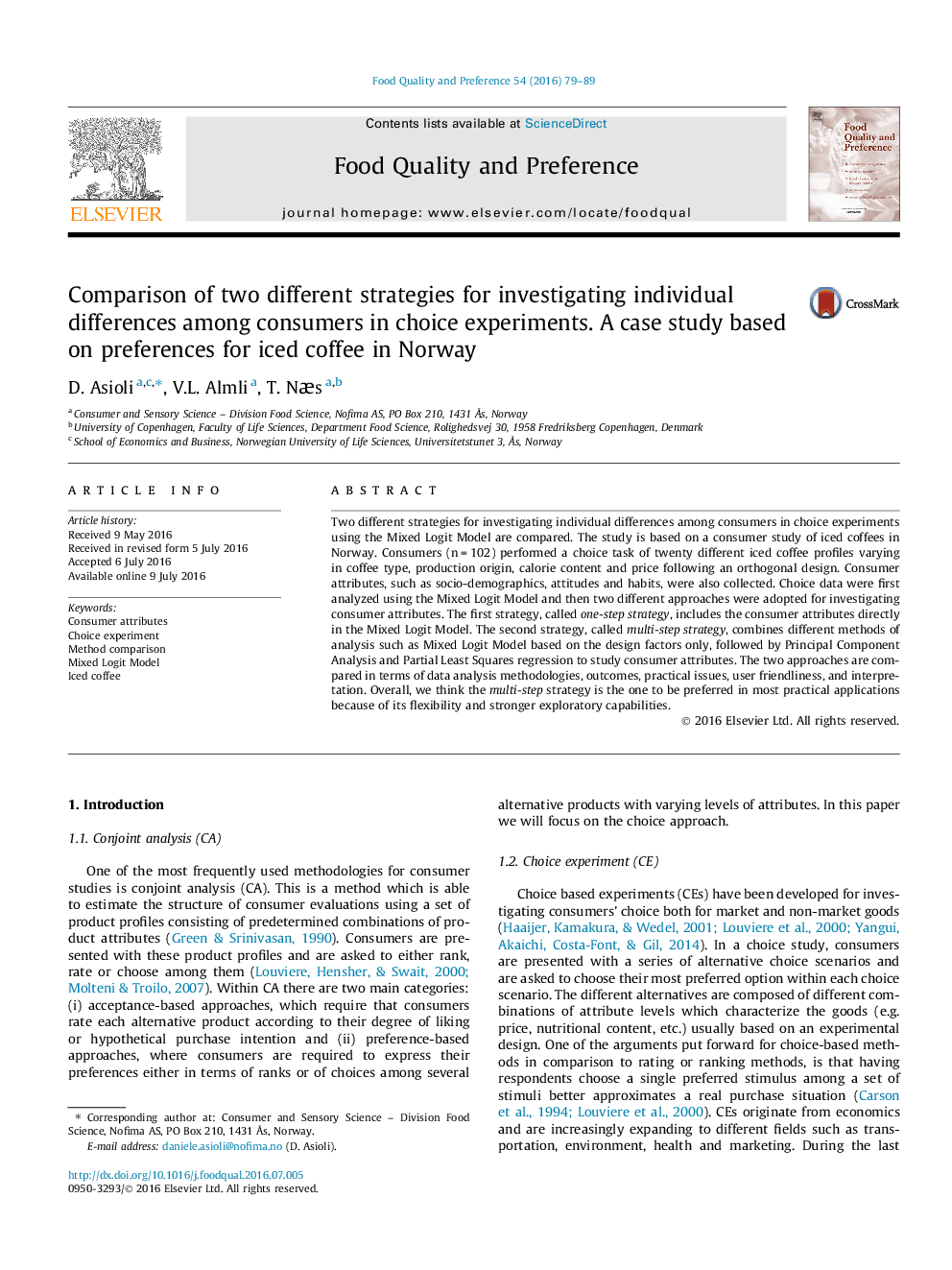| Article ID | Journal | Published Year | Pages | File Type |
|---|---|---|---|---|
| 6261147 | Food Quality and Preference | 2016 | 11 Pages |
â¢Two strategies investigating individual differences using choice data are compared.â¢Strategy 1 includes the consumer attributes directly in the Mixed Logit Model.â¢Strategy 2 combines different methods such as Mixed Logit Model, PCA and PLS.â¢Strategy 2 is preferred for its flexibility and stronger exploratory capabilities.
Two different strategies for investigating individual differences among consumers in choice experiments using the Mixed Logit Model are compared. The study is based on a consumer study of iced coffees in Norway. Consumers (n = 102) performed a choice task of twenty different iced coffee profiles varying in coffee type, production origin, calorie content and price following an orthogonal design. Consumer attributes, such as socio-demographics, attitudes and habits, were also collected. Choice data were first analyzed using the Mixed Logit Model and then two different approaches were adopted for investigating consumer attributes. The first strategy, called one-step strategy, includes the consumer attributes directly in the Mixed Logit Model. The second strategy, called multi-step strategy, combines different methods of analysis such as Mixed Logit Model based on the design factors only, followed by Principal Component Analysis and Partial Least Squares regression to study consumer attributes. The two approaches are compared in terms of data analysis methodologies, outcomes, practical issues, user friendliness, and interpretation. Overall, we think the multi-step strategy is the one to be preferred in most practical applications because of its flexibility and stronger exploratory capabilities.
